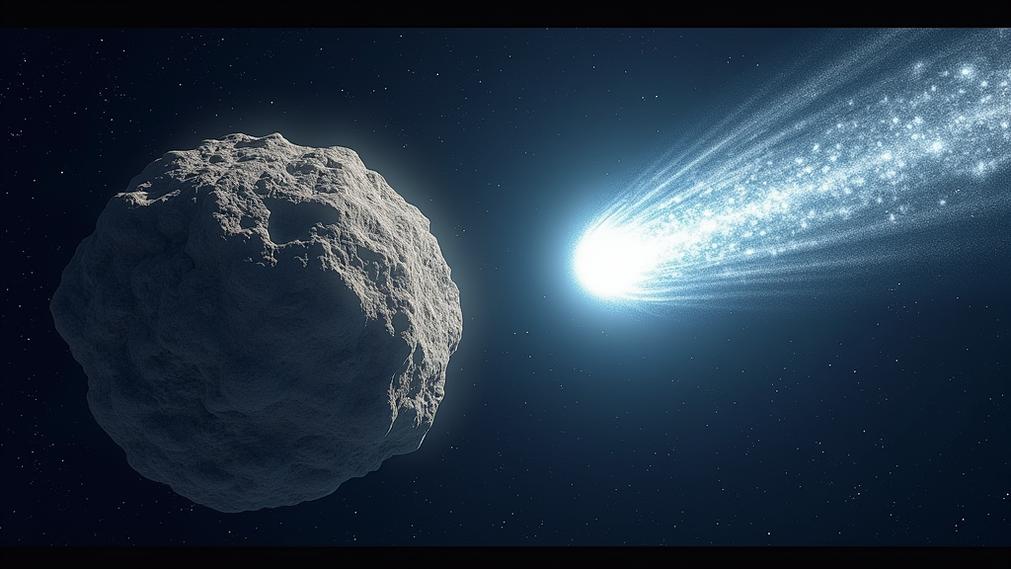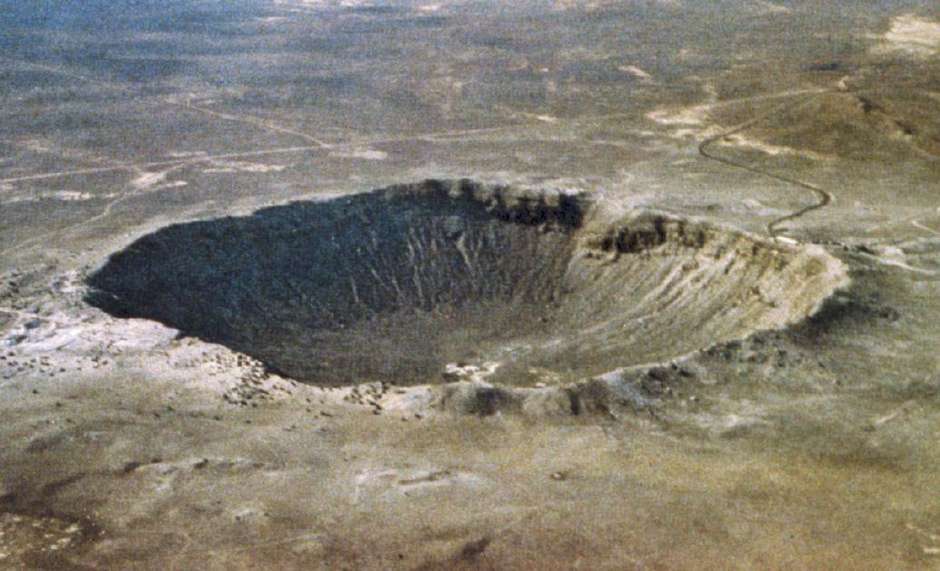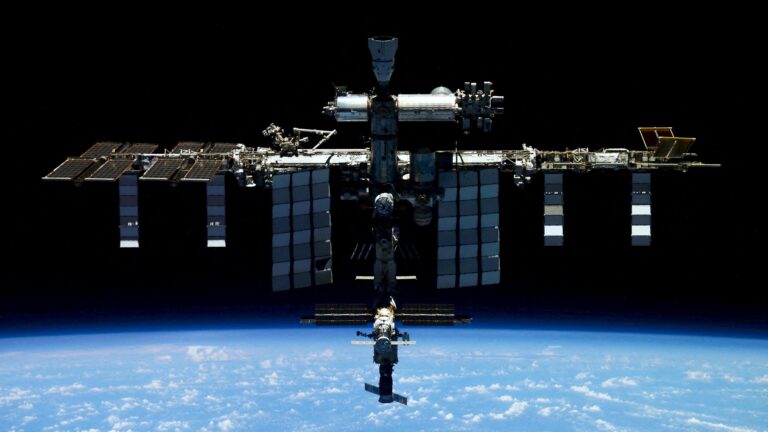Embark on a thrilling journey through the infinite universe, as we delve into the captivating mysteries of celestial bodies – meteors, asteroids, and comets. Uncover the secrets that these space wanderers hold, and grasp how they have shaped our understanding of the cosmos. This fascinating exploration is a must-read for space enthusiasts and curious minds alike. For eons, these celestial wonders have sparked interest and fueled imagination. Meteors, with their spectacular flashes across the sky, asteroids with their potential for mass destruction, and comets with their glowing comas and streaming tails. What causes these phenomena? What is their composition? How do they interact with our planet and other celestial bodies? These intriguing questions are waiting to be answered in this enthralling journey. But the intrigue doesn’t stop there. There are a multitude of theories and scientific discoveries associated with these cosmic entities. Are they remnants of the early solar system? Could they harbor evidence of extraterrestrial life? These riveting topics will be discussed and dissected, making this an essential read for all science aficionados. Furthermore, the content also aims to enlighten on the potential risks and benefits that these heavenly bodies pose to Earth. With information drawn from the latest research and findings, one will be educated on the real-world implications of these celestial bodies. Discover how scientists are using these natural space entities to deepen our understanding of the universe and potentially safeguard our future. Concluding with the grandeur of space exploration, we will discuss the ongoing and future missions targeted at studying these celestial bodies. Gain insights into the technological advancements aiding in the unraveling of these cosmic mysteries. So, fasten your seatbelts and prepare for an enthralling interstellar voyage that transcends beyond our blue planet and into the heart of the cosmos.
The Basics of Meteors, Asteroids, and Comets
Understanding the fundamental nature of these celestial bodies is crucial to grasping the broader dynamics of our solar system. While they may seem similar at a glance, meteors, asteroids, and comets each have distinct characteristics, origins, and behaviors that make them uniquely fascinating.
In simple terms, a meteor is not an object itself but rather the visible phenomenon—often called a “shooting star”—that occurs when a small chunk of interplanetary debris, known as a meteoroid, enters Earth’s atmosphere at high velocity. As it speeds through the atmosphere, friction with air molecules causes the object to heat up and burn, creating the brilliant streak of light we observe in the night sky. Most meteors disintegrate completely before reaching the ground, but if a fragment survives the fiery descent and lands on Earth, it is then classified as a meteorite.
Asteroids, by contrast, are rocky, airless bodies that orbit the Sun, primarily within the asteroid belt, a vast region of space located between the orbits of Mars and Jupiter. These ancient remnants are leftovers from the early solar system, dating back roughly 4.6 billion years. They vary greatly in size—from tiny pebbles to dwarf-planet-sized objects like Ceres—and are composed mostly of rock, metal, or a mixture of both. Unlike meteors, asteroids typically remain in space and do not often interact with Earth directly unless they are perturbed from their orbits.
Comets, on the other hand, are often described as “dirty snowballs.” These icy bodies originate from the colder, more distant regions of the solar system, such as the Kuiper Belt e o Oort Cloud. Comets are composed of water ice, frozen gases (like carbon dioxide and methane), rock, and cosmic dust. When a comet approaches the inner solar system, solar radiation causes its volatile components to vaporize, forming a glowing atmosphere called a coma, and often a spectacular tail that points away from the Sun due to the solar wind. The tail can stretch for millions of kilometers and is one of the most iconic visual features in astronomy.
Though these celestial bodies differ in form and behavior, they share a common role as messengers from the past. They preserve materials and conditions from the solar system’s formation, acting as cosmic time capsules. Their study helps scientists better understand planetary formation, chemical evolution, and even the potential for life elsewhere in the universe.
Together, meteors, asteroids, and comets form an interconnected part of the solar system’s grand design each offering vital clues to our cosmic origins.
The Life Cycle of a Meteor
The journey of a meteor begins long before it becomes a brilliant flash across the night sky. It all starts with a meteoroid, a small fragment of rock or metal traveling through space. These fragments can originate from the debris of asteroid collisions, cometary tails, or even from the surface of the Moon or Mars, ejected by impact events. Meteoroids vary widely in size—from tiny grains of sand to large boulders—and they float through space, occasionally intersecting the orbital path of Earth.
When a meteoroid enters the Earth’s atmosphere, typically at speeds ranging from 11 to 72 kilometers per second (25,000 to over 160,000 mph), it experiences intense friction with atmospheric gases. This causes the outer surface of the meteoroid to heat up rapidly, resulting in a bright, glowing streak of light known as a meteor. This visible phenomenon is what we commonly refer to as a “shooting star.” Most meteors are visible for only a few seconds before they completely vaporize due to the intense heat generated during atmospheric entry.
However, if the meteoroid is large and dense enough, a portion of it may survive the fiery descent. When this fragment reaches the Earth’s surface, it is called a meteorite. Meteorites provide scientists with direct physical samples of materials from other parts of the solar system. They are classified into three main types based on their composition: stony, iron, e stony-iron meteorites. Each type offers unique insights into the structure and history of asteroids and other parent bodies.
Interestingly, some meteorites contain presolar grains—tiny mineral inclusions that predate the formation of our solar system—making them among the oldest known materials on Earth. Thus, the life cycle of a meteor, from space-faring rock to terrestrial artifact, is not only spectacular to witness but also scientifically invaluable.
The Composition and Characteristics of Asteroids
Asteroids are made up of various types of rock and metals, with some even containing traces of ices. They are often pockmarked with craters or grooves, much like our moon. These celestial bodies can range in size from small boulders to objects that are hundreds of kilometers in diameter.
Notable Asteroids
- Ceres: This is the largest asteroid and the only one in the inner solar system to be classified as a dwarf planet.
- Vesta: One of the brightest asteroids visible from Earth. NASA’s Dawn spacecraft visited it in 2011.
- Pallas: Discovered in 1802, Pallas was the second asteroid to be discovered and is one of the largest in the asteroid belt.
Comets: Harbingers of the Outer Solar System
Comets, often described as “dirty snowballs,” are captivating celestial bodies composed of water ice, frozen gases, rock, and dust. These cosmic wanderers are believed to originate from the coldest and most distant regions of our solar system, specifically the Kuiper Belt and the Oort Cloud. These areas lie far beyond the orbit of Neptune and are home to countless icy remnants left over from the solar system’s early formation.

As a comet travels inward toward the Sun, it undergoes a dramatic transformation. The increase in temperature causes the frozen materials within the comet’s solid nucleus to sublimate, changing directly from a solid to a gas. This process creates a surrounding cloud of gas and dust known as the coma, which can expand to thousands of kilometers in diameter. The coma is what gives comets their glowing appearance and marks the beginning of their visually stunning phase.
In addition to the coma, comets develop one or more tails. Solar radiation and the solar wind exert pressure on the coma, pushing dust particles and ionized gases away from the nucleus and forming a luminous tail that always points away from the Sun. These tails can stretch for millions of kilometers, creating some of the most breathtaking sights in the night sky.
Beyond their visual beauty, comets are scientifically significant. They are considered to be some of the most primitive bodies in the solar system, containing unaltered materials from its earliest days. Studying their composition can provide clues about the conditions that existed when the planets were forming. Some researchers even hypothesize that comets may have delivered water and organic molecules to early Earth, playing a key role in the development of life. As such, comets are not just celestial visitors, but vital messengers from the outer reaches of our cosmic neighborhood.
Historical Comets
- Halley’s Comet: Probably the most famous comet, it is visible from Earth every 76 years. The last time it was seen was in 1986.
- Comet Hale-Bopp: Visible to the naked eye for a record 18 months in 1996 and 1997.
- Comet Shoemaker-Levy 9: This comet was broken apart and collided with Jupiter in 1994, providing the first direct observation of an extraterrestrial collision of Solar System objects.
The Study and Exploration of These Celestial Bodies
The study of meteors, asteroids, and comets provides crucial insights into the early solar system. They serve as relatively unchanged relics from our cosmic past and studying them can reveal much about the materials and conditions that contributed to the formation of planets.
Missions to Asteroids and Comets
Over the years, space agencies have launched several ambitious missions to explore asteroids and comets up close. NASA’s OSIRIS-REx mission was designed to collect and return samples from the asteroid Bennu, providing valuable information about its composition and history. This mission marked a significant milestone in planetary science. Meanwhile, the European Space Agency’s Rosetta mission made history by successfully orbiting and landing on a comet. The data gathered from Comet 67P/Churyumov–Gerasimenko revealed new insights into its structure, chemistry, and activity. These missions have expanded our understanding of the early solar system and the building blocks of life.

The Impact of Meteors, Asteroids, and Comets on Earth
Although meteors, asteroids, and comets captivate scientists and the public alike, they can also pose significant risks. Throughout Earth’s history, large impacts have caused dramatic environmental changes. The most well-known example is the asteroid believed to have triggered the mass extinction of the dinosaurs. Understanding these threats is essential for developing strategies to detect and potentially prevent future catastrophic events.

Conclusão
In conclusion, the exploration of meteors, asteroids, and comets offers a captivating celestial journey that unravels the enigmatic mysteries of our universe. The wondrous phenomena of these cosmic bodies provide vital insights into the complex dynamics of our solar system and beyond. These celestial objects, varying in size, composition, and origin, carry a wealth of scientific knowledge waiting to be discovered. Studying them paves the way for advancements in space exploration and technology, proving to be a boon for astronomers and scientists worldwide. Furthermore, the potential threat they pose to our planet underscores the importance of continued research and monitoring in this field, thus acting as a catalyst for future space missions. As we continue to delve into the mysteries of these celestial bodies, we move closer to understanding our place in the cosmos, contributing to the age-old quest for knowledge about our universe. The celestial journey of exploring meteors, asteroids, and comets indeed paints a vibrant picture of the cosmic tapestry, serving as a testament to the vast, fascinating, and ever-evolving universe we inhabit.



